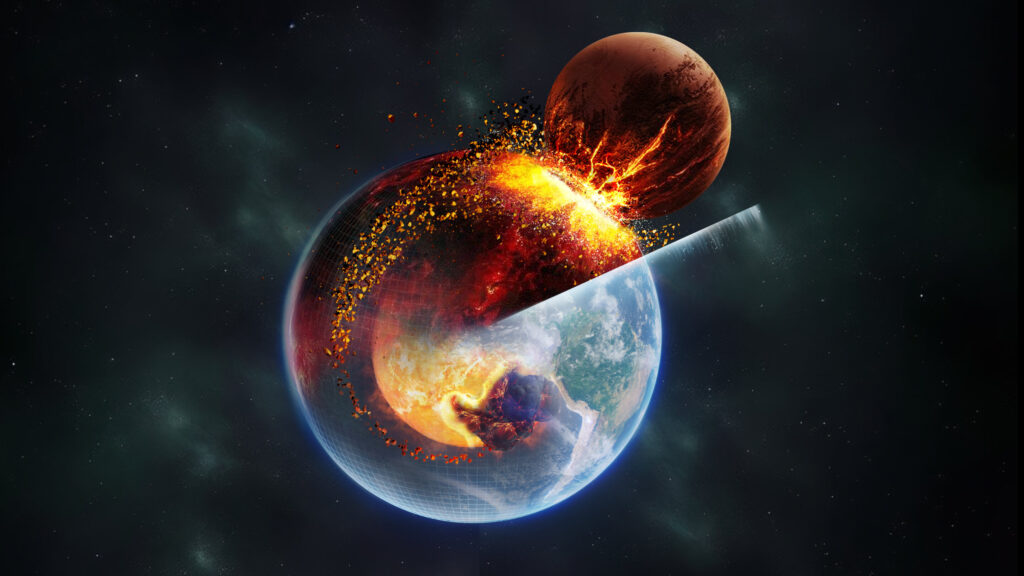Scientists suggest that evidence that the Moon once formed as a result of the collision of the Earth with some large body may lie in the depths of our planet. They even found two anomalies that could confirm this.

Moon’s origin
Professor Deng Hongping from the Shanghai Astrophysical Observatory suggested looking for evidence of how the Moon formed inside the Earth. He is sure that evidence of what happened 4.5 billion years ago may be hidden at great depths.
There are several hypotheses about the formation of the Moon. One of the most popular in recent decades connects it with a giant collision. Allegedly, at the beginning of the Solar System, two planets were orbiting in close orbits. The slightly larger primary Earth, which is commonly called Gaia, and Theia, about the same size as Mars.
They collided somehow and partially collapsed. At the same time, most of the mass of the former Theia merged into the Moon, and the Earth simply increased in size, getting significantly less of the material of the wandering planet.
The problem with this theory is that the two planets would have to form under slightly different conditions. This means that there must be strong differences in the chemical composition of the Earth and the Moon. However, this is not the case. The isotopic composition of the moon’s rocks is the same as that of our planet.
Traces in the Earth’s lithosphere
This problem was tried to be solved in a new study. Since 2017, its authors have been working on the Meshless Finite Mass (MFM) model, which describes all the turbulence that would occur in the solid phase of planets when they collide. It helped to suggest a solution.
Using this new approach and conducting numerous simulations of a giant collision, Professor Deng found that the early Earth showed mantle stratification after the collision, with the upper and lower mantles having different compositions and states. In particular, in the upper mantle, there was a magmatic ocean formed by careful mixing of material from Gaia and Theia, while the lower mantle remained predominantly solid and retained the elemental composition of Gaia.
According to scientists, mixing of the Gaia and Thea materials occurred only to a depth of 1000 km, and only the source material was located below. And most importantly, it is located there today. That is, there is nothing surprising in the similarity of the isotopic composition, it is just necessary to dig deeper.
Or not to dig, but just look at the results of other studies. After all, scientists have discovered the so-called Large Low Velocity Provinces. They are located under Africa and the Pacific Ocean and stretch in the lower part of the mantle for thousands of kilometers.
They were discovered by analyzing the passage of seismic waves through the thickness of the planet. In these places, it is significantly reduced. Scientists are sure that the reason for this is that the pure source material of which the Earth consists is concentrated here.
According to phys.org
Follow us on Twitter to get the most interesting space news in time
https://twitter.com/ust_magazine
